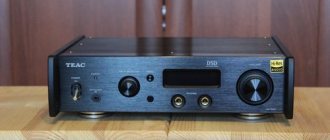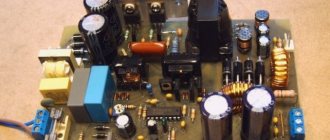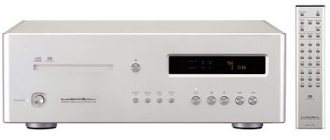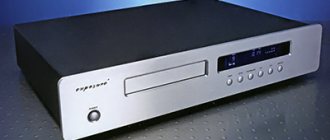| Floor-standing acoustics LINN MAJIK 140 | RUB 205,800 | Buy |
A new product from Scottish specialists from Linn, the four-way speaker system Majik 140, has gone on sale in the British Kingdom. The floorboards are a true work of art and are available in four natural wood veneer finishes: black oak, American cherry, maple and white.
Updated Linn 2K drivers, a reinforced 40-liter cabinet with a bass reflex port located on the rear panel, optionally purchased cast spikes that guarantee better stability, and metal grills at ¾ of the speaker height, ample bandpass connectivity (mono-amping, bi-amping, three -amping and cuadro-amping) - these are the external distinctive features of the Linn Majik 140 .
Majik 140 speakers sound amazing, just magically good! They may sound completely incomparable. To do this, you can simply switch from a basic to a more advanced connection option - bi-wiring, tri-wiring or even quad-wiring. However, these speakers show the best results when switching to a fully active connection mode using 8-channel amplification. Available in four finishes, these speakers will be a worthy addition to your living room. The Majik 140 speakers combine perfectly with other Linn Majik components and represent fantastic value for money.
Acoustic characteristics of Linn Majik 140
- Nominal resistance: 4Ω
- Sensitivity: 88dB
- Frequency range: 55Hz~20kHz
- Dimensions, mm: 975 x 250 x 335
- Each weight (with stand): 21.3 kg
| Ideal for listening to music of any style - classical, jazz, rock, pop and others. |
Characteristics
Specifications
Scottish magic
The main character of our test is the multifunctional model Linn Majik DS-I, the production of which began at the end of last year. If you don’t get carried away with all sorts of complex amplification circuits using additional devices, then we can say that the Linn Majik DS-I is a self-sufficient device, since it combines a player-streamer, an input switch, a preamplifier and a power amplifier, built using the same Chakra technology as a separate integrated Linn Majik-I. Skipping the nuances, I’ll note that Linn Majik DS-I is Linn Majik DS and Linn Majik-I, only under one roof. Thus, to create a stereo system based on DS-I, you only need a couple more speakers plus a signal source, which can be any device that has a linear analog or digital output, although priority, as you might guess, is given to the function of playing audio files over the network. The combine does not have an on-screen menu, and all settings can be done remotely using any available Internet browser. The procedure is quite simple: just find the corresponding UpnP device on the local network and go into it, and a multi-page settings menu appears, where you can set all the necessary parameters, including assigning inputs, setting the default volume, etc. Playback commands too remote and carried out from a regular computer, handheld or smartphone. In order to turn the selected device into a management console, you only need to install Linn software on it. The program interface is strict and stylish, it is focused on touch screens: the main virtual buttons are enlarged, and secondary functions are displayed only when necessary. Proprietary software allows you to start playback from a specified source (for example, from a NAS or a regular flash drive), as well as create various playlists. And, of course, the albums in the collection can be provided with covers and other additional information to make it even easier to navigate. However, this is the final stage. First, you will have to tinker with the configuration and setup of the entire complex. In this sense, a computer with a DAC connected to it is much simpler and clearer. But the Linn sound quality more than compensates for the organizational inconveniences. I managed to verify this by listening to three dozen compositions of different styles in files from 16 bit / 44.1 kHz to 24 bit / 192 kHz. True, it quickly became clear that the Linn Majik system has a very cool attitude towards soulful classics, but reproduces all modern music, jazz and especially ambient music simply superbly. The sound is collected, dense, very balanced. And there is not the slightest lack of bass, although the stated lower limit of the speakers at 55 Hz at a level of –3 dB can be misleading. One way or another, Linn Majik technology can provide a lot of fun, simultaneously taking streaming beyond the computer. And for many music lovers who value the convenience of using audio files, but cannot stand anything computer-based, this is very important.
Characteristics of Linn Majik 140
| Specifications | ||
| Type | — | Front acoustics |
| Resistance (passive) | — | 4 ohm |
| Impedance (active, bass) | — | 8 ohm |
| Impedance (active, midrange) | — | 8 ohm |
| Resistance (active, tweeter) | — | 7 Ohm (active, super tweeter): 7 Ohm |
| Sensitivity | — | 88 dB |
| Frequency range (passive mode) | — | 55 Hz – 20 kHz |
| Frequency range (active mode) | — | 55 Hz – 20 kHz |
| Crossover Settings | — | passive/fully active |
| Connection options | — | Single, bi-, tri- or quad- wire/amp 4-channel active |
| Speaker wire connectors | — | 4 mm bananas, blades, bare wires |
| Design | ||
| Color design | — | black |
| Dimensions (WxHxD) | — | 250 x 975 x 335 mm |
| Weight | — | 21.3 kg |
When the best becomes perfect
With the analog preamp section things are more complicated. You can also turn it off if you wish and use a preamplifier (to do this, you need to activate the Unity Gain function on the corresponding input in the Sources tab of the Linn Config control program settings). However, it will not be possible to do the same for Playlist / UPnPAV (when the player works with a digital stream over the network) - the settings simply do not offer such an option. In this case, the manufacturer recommends setting the device’s output signal level to 80/100 and then adjusting the volume on the preamplifier. Also note that the DSM model heats up much more than the DS1 modification, so provide the player with enough free space. What's in the bottom line? You can forget about UPnP servers, rescans of working directories of network storages after uploading new files to the collection, and other inconveniences. Linn Klimax DSM accepts music from anywhere - from an iPhone or iPad, from the Internet, or from a computer with iTunes installed. The sound of SACD/DVD-A and Blu-ray discs is also significantly improved. And while it's unlikely that anyone will abandon a 7.1 home theater configuration in favor of a 2.0 one, Blu-ray music releases with two-channel tracks can now play fantastically well. In addition, there is nothing stopping you from removing your old preamp from the system - it is unlikely to compare with the Linn Klimax Kontrol, one of the best devices of its type at the moment - and connecting the turntable directly to the Linn Klimax DSM. Not bad? Well, now the main question: how does the new version of Linn's top network player sound? Let's just say: excellent. No, it's perfect. Even perfect. Despite the more complex output stages, its sound is almost identical to the combination of KDS1 and Klimax Kontrol. The separate version operates with a slightly wider panorama, but in the Linn Klimax DSM performance the same compositions demonstrate greater stage depth. Of course, this is a matter of taste, but it seemed to us that some of the changes made to the motherboard (the engineers tried to eliminate the negative impact of the complexity of the design due to the presence of additional inputs) had a clearly positive effect on the sound - the updated player presents a number of recordings even more interesting than its brother with index DS1. Although Linn itself claims that the difference between these models is vanishingly small. Any track on Linn Klimax DSM can drive you crazy. Beethoven's Ninth Symphony amazes with its scale, Dire Straits' "Money for Nothing" takes you straight to the eighties, and Infected Mushroom's "Vicious Delicious" reveals an ideal sense of rhythm and reference separation of sound images. We were also interested in one more thing - how and how much will the sound of the device change when the same track is fed to it from a network server and from another streamer via HDMI (we used Oppo BDP-93)? And here the player did not lose face, only slightly moderating the hardness of the images in the second version. So using the combination “an external drive with a USB interface - another streamer - Linn Klimax DSM as a digital-to-analog converter” can also be quite justified - for example, if there is no computer network in the house or there is no desire to organize and maintain a network music library. Bravo, Lynn!
Why is all this needed?
Linn Klimax Exact System
The Klimax Exakt music system from the Scottish company Linn consists of an updated Klimax Exakt DSM network player and a Klimax Exakt 350 speaker system, each speaker of which has a special Exakt Engine. With Exakt Link technology, music content is transferred from the player in lossless 24-bit digital format, as close to the speaker as possible, and the conversion to analog occurs at the latest possible stage, right in the speaker - no speaker cable required! The Exakt Engine digital platform not only eliminates magnetic and phase distortion of analog crossovers and corrects factory tolerances, but also optimizes the system for a specific room. The Klimax Exakt system is the best way to listen to music at home. Allows you to connect all your existing sources and improve the quality of all the music you listen to. Easily browse your music library on iPad, select albums by cover, and create playlists of your favorite songs and tracks. Get instant access to new music via Internet radio and use any online music service on a player that puts sound quality first.
- Controlled from a smartphone (iPhone/Android), tablet, laptop, PC or Mac
- 8 digital inputs (HDMI, S/PDIF, Toslink)
- 2 digital analog inputs (XLR, RCA)
- Digitizes analog sources using high-quality digital-to-analog converters
- 4 Exakt Link connections for connecting Exakt 350 loudspeakers and further system expansion
- Decodes FLAC, WAV, Apple Lossless (ALAC), MP3, WMA (except lossless), AIFF, AAC and OGG audio formats with 24-bit resolution and 192 kHz sampling rate
- Broadcasts Internet radio, podcasts and reruns
- Support for the Songcast function allows you to synchronize the playback of audio content in all corners of the house
- Type: Network Audio Streaming Player with Exact Link
- Supported file types: FLAC, Apple Lossless (ALAC), WAV, MP3, WMA (except lossless), AIFF, AAC, OGG
- Audio sampling rates: 7.35k – 192k
- Encoding: 16–24 bit
- Control protocol: compatible with UPnP™ media servers, UPnP™ AV 1.0 control points
- Power: Linn Dynamik Switch Mode Power Supply
- Mains voltage: 100–120 V ac (±10%) 50–60 Hz 200–240 V ac (±10%) 50–60 Hz
- Energy consumption: “Sleep mode” 9-10 W; Active mode 22 W
- Dimensions: mm (H x W x D): 60 x 350 x 355
- Weight: 8.6 kg
The main idea of the system is the reception and transmission of a signal in digital form, and its conversion to analog and amplification only immediately before electro-mechanical conversion - that is, in acoustic systems. Let's look at the implementation details.
The head unit of the system is called Klimax Exakt DSM and is essentially a Klimax DSM model, but without the DAC unit, instead of which the Exakt Link interface is installed. The power switch located on the bottom is not easy to detect, but on the other hand, why use it often? Naturally, the device uses a proprietary Dynamik Slimline II power supply with a rating of 70 W. There is an HDMI switcher with 3 inputs and one output, a pair of optical and coaxial digital inputs, as well as balanced and unbalanced analog inputs, with galvanic isolation through two pairs of Lundahl LL1527 isolating transformers and a pair of Burr-Brown PCM4222 ADCs. Naturally, there is Ethernet and two pairs of Exakt Link terminals. The only not-so-audiophile aspect is the low height of the case and the “overflow” of the top part above the rear panel, which precludes the use of full-size power cables. Theoretically, one could still criticize the not very clear display and the rustic standard remote control, but given the fact that the main use case is via the iPad, these features can hardly be called disadvantages.
The Klimax Exakt 350 acoustic systems do not look very large, but at the same time they are extremely massive, and out of more than 70 kg of live weight, a pound is accounted for by a steel base with height-adjustable spikes. The internal volume of the case is 50 liters, it is divided between three of the six available speakers, the remaining three are mounted on an external metal frame (the manufacturer calls it a 3K array), which first appeared on the Komri model of 2002. A pair of 8-inch speakers, judging by the upper cutoff frequency (85 Hz), actually operate as integrated subwoofers and, apparently, have a closed acoustic design. Next, a 6-inch woofer with a fiberglass diffuser comes into play, and then (from 340 Hz) a 3-inch dome midrange speaker. From about 3 kHz a traditional inch tweeter is used, and from 8 kHz a half-inch microwave emitter is used. As for amplification, kilowatt modules are used for subwoofers, LF/MF speakers are connected to amplifiers rated at 400 W each, and HF emitters are “content” with 100-watt units. Total - 3 kW per speaker, and this takes into account active division into strips, that is, minimized heat losses! Unfortunately, filtering and digital-to-analog conversion technologies are not covered in detail, and painless dismantling of the hardware unit on the back panel of each speaker (by the way, it is mounted on a kind of silent blocks) is impossible in our conditions. It is only obvious that proprietary Chakra amplification technologies are used, which first appeared in the lineup 10 years ago.
Speaker systems Linn Klimax Exakt 350
| frequency range | 20-33000 Hz |
| Energy consumption | 250 W |
| Dimensions | 1130 x 404 x 482 mm |
| Weight | 71.2 kg |










